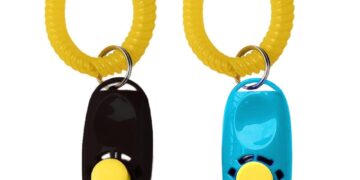Table of Contents
It’s Not Just a Leash; It’s Technical Gear. We Break Down the Biomechanics, Safety, and Top Models of 2025.
Part 1: The Freedom Paradox: Understanding the Hands-Free Leash as a Technical System
1.1 Introduction: Beyond Convenience
The appeal is undeniable.
The image of running with a natural, unimpeded arm swing, your canine partner striding effortlessly beside you.
The practicality of navigating a rugged trail with trekking poles in both hands.
The simple pleasure of carrying a warm coffee and your phone on a crisp morning walk without a leash handle awkwardly looped around your wrist.1
This is the promise of the hands-free dog leash: liberation.
It offers a seamless integration of dog ownership into an active life, benefiting everyone from joggers and parents pushing strollers to individuals with mobility issues who need their hands for support.1
Yet, to view this tool merely through the lens of convenience is a fundamental and potentially dangerous miscalculation.
The moment a leash moves from the hand to an anchor point on the body, it ceases to be a simple tether.
It becomes a piece of technical gear that creates a direct, powerful biomechanical link between the user’s core and the unpredictable force of a living animal.
This transformation has profound implications for balance, control, and safety.
The shift from a handheld leash to a hands-free system is not just a change in how the leash is held; it is a fundamental reclassification of the tool from a passive accessory to an active piece of performance equipment.
This reclassification demands a more rigorous evaluation of its components, akin to how one would scrutinize a backpack’s suspension system or a mountaineer’s safety harness.
Understanding this distinction is the first and most critical step toward choosing the right system and, more importantly, using it safely.
1.2 The Climbing Harness Analogy: A New Framework for Evaluation
To properly evaluate this class of equipment, a new mental model is required.
Consider the rock-climbing harness.
It is a piece of life-saving equipment engineered with a singular, critical purpose: to arrest a fall by distributing immense, sudden forces across the strongest parts of the human body—the hips and core—in a safe, predictable, and controlled manner.3
A hands-free leash belt performs a functionally similar task.
It manages and distributes the force generated by your dog, which can be just as sudden and jarring as a climber’s fall, especially when a squirrel makes an unexpected appearance.
The crucial difference, however, is that a climber’s fall is a known possibility within a controlled system; a dog’s lunge is often a random event in a dynamic environment.
This analogy provides a powerful and effective framework for analyzing any hands-free leash system.
Instead of asking “Is it long enough?” or “What color is it?”, the evaluation should be based on the same principles that govern the design of life-saving equipment.
Three core principles, borrowed directly from the world of technical climbing gear, will guide this report 5:
- Load Distribution: How effectively does the system’s belt spread the dog’s pulling force across the wearer’s body? A wide, padded waistbelt on a climbing harness prevents injury and ensures comfort during a fall; a well-designed leash belt should do the same during a powerful pull.4
- Buckle and Hardware Security: Are the connection points—the buckles on the belt and the clips on the leash—infallibly secure? A climbing harness uses auto-locking or double-backed buckles because failure is not an option.3 The hardware on a hands-free leash is the system’s most critical potential point of failure and must be evaluated with the same seriousness.
- Ergonomic Comfort: Does the system fit the body in a way that allows for natural movement while remaining secure and comfortable over extended periods? A harness must allow a climber full range of motion without chafing or creating pressure points; a leash system must do the same for a runner or hiker.4
By applying this technical framework, it becomes possible to move beyond marketing claims and assess these products for what they truly are: performance gear that directly impacts the safety and enjoyment of any shared adventure.
Part 2: The Biomechanics of the Bond: Safety, Risk, and Mitigation
2.1 Force, Fulcrums, and Falls: Why Your Center of Gravity Matters
The transition from a handheld to a hands-free leash fundamentally alters the physics of control.
When holding a leash, a sudden pull from a dog engages the arm and shoulder.
The human body instinctively reacts by planting a foot and using the arm as a flexible, shock-absorbing lever.
Crucially, if the force is overwhelming, the ultimate safety release is simply letting go.
Attaching the leash to the waist or hips removes this entire dynamic.
The anchor point shifts to the body’s center of gravity, creating a much more rigid and unforgiving connection.6
A sudden, sharp pull no longer yanks on an appendage; it pulls the user’s core directly from underneath them.
This can lead to a loss of balance where recovery is far more difficult, often resulting in a backward or sideways fall.7
The risk of injury is significant and well-documented in user reports, which describe everything from general back strain and hip pain to severe, surgery-requiring accidents like torn knee ligaments.6
Medical staff in emergency rooms have noted a concerning number of injuries directly attributable to these leashes, underscoring the reality of the risk.7
This creates an “illusion of stability.” A gentle, consistent pull from a well-behaved dog can make the wearer feel anchored and solid, “like the backstop in a tug of war”.7
This feeling, however, can breed a dangerous complacency.
The system is only stable under predictable, low-force conditions.
With an untrained or reactive dog, that stability vanishes in an instant.
The leash transforms from a tool of convenience into a direct injury mechanism, removing the body’s natural shock absorbers (the arms) and the ability to release the connection.
The bungee component, often marketed as the primary safety feature, can paradoxically heighten this risk.
While it can smooth out the rhythm for a trained running partner, for a dog that pulls, the elastic feedback can be misinterpreted as an invitation to pull harder.6
The dog learns that applying more force extends its range, effectively turning the bungee into a training device that reinforces the exact behavior it is meant to mitigate.8
When the dog hits the end of the bungee’s stretch, the resulting jolt can be even more severe, creating a slingshot effect that transfers a sharp, amplified force directly to the wearer’s hips and lower back.
2.2 Pre-Flight Checklist: Is a Hands-Free Leash Right for Your Dog?
Given the biomechanical risks, it is imperative to understand that a hands-free leash is not a training tool.
It is an advanced piece of equipment best reserved for dogs that are already well-behaved on a traditional leash.7
Before making the switch, an honest assessment of the canine partner is the most critical safety check a user can perform.
The following checklist should be considered non-negotiable.
- Pulling Tendency: Does the dog walk on a loose leash without constant tension? If the dog is a chronic puller, a hands-free system will not solve the problem and may lead to injury for both the owner and the dog.7 The primary focus should be on loose-leash training with conventional tools first.
- Reactivity and Lunging: How does the dog react to common triggers like squirrels, cats, or other dogs? If the dog is prone to sudden, powerful lunges, a hands-free leash is not safe.7 The inability to quickly create slack or release the leash makes managing a reactive dog incredibly dangerous when the leash is attached to your core.
- Command Reliability: Does the dog have a reliable response to commands like “heel,” “come,” and “sit,” even in distracting environments? A well-trained dog that can be recalled verbally is a much safer candidate for a hands-free system.7
- Size and Strength Ratio: How does the dog’s size and strength compare to the handler’s? A large, powerful dog can easily pull a smaller person off their feet, regardless of the equipment used.10 A hands-free system can exacerbate this mismatch by providing the dog with a more stable anchor to pull against. Conversely, a very small dog may not be strong enough to properly engage the bungee mechanism in some leashes, rendering the feature useless.12
If the answer to any of these questions raises a red flag, it does not mean a hands-free leash is forever out of reach.
It means more training is required before this specific tool can be used safely.
It is for functionality with a trained dog, not for training a pulling one.7
2.3 Mitigating Risk: Best Practices for Hands-Free Operation
For handler-dog teams that meet the criteria, adopting a set of best practices can significantly mitigate the inherent risks and enhance the safety of the system.
- Proper Belt Placement: The belt should be worn low, snugly around the hips, not high on the soft tissue of the waist.13 This lowers the center of gravity and engages the body’s stronger pelvic structure, similar to how a proper canicross or skijoring belt is designed.9 A belt worn too high on the waist can put undue stress on the lower back.7
- Use a Harness, Not a Collar: Connecting any leash, especially a hands-free one, to a dog’s collar poses a risk of tracheal or neck injury from sudden jolts.11 A well-fitted harness is essential, as it distributes pulling forces across the dog’s chest and shoulders, which are far more robust.11 A harness with a front attachment ring can also be beneficial for discouraging pulling.11
- Maintain Situational Awareness: The convenience of free hands can lead to the distraction of using a cell phone or not paying attention to the environment.13 This is a critical error. The handler must remain vigilant, constantly scanning for potential triggers—squirrels, cats, other dogs—and be prepared to react.13
- Practice the Quick-Release: Before heading out, the user should be intimately familiar with the belt’s buckle mechanism. Practice quickly unbuckling the entire belt so that in an emergency, the entire system can be detached from the body and held like a traditional leash.13 Some systems also feature a quick-release clip for the leash itself.
- Keep a Hand Ready: Especially in uncertain environments, it is wise to rest a hand on the leash or be ready to grab a traffic handle at a moment’s notice.13 This provides an extra layer of security and allows for a faster transition to manual control if needed.
Part 3: Deconstructing the System: Anatomy of a Hands-Free Leash
Applying the climbing harness framework, a hands-free leash can be broken down into its three critical components: the belt that anchors to the body, the leash that forms the connection, and the hardware that holds it all together.
The integrity of the entire system depends on the quality and design of each part.
3.1 The Belt: Your Body’s Anchor Point
The belt is the foundation of the system, analogous to the waistbelt of a climbing harness.
Its primary job is to distribute the dog’s pulling force comfortably and securely across the wearer’s core.
- Load Distribution: Belts vary significantly, from simple, unpadded one-inch nylon straps to wider, padded designs. Just as a climber would choose a harness with a wide, padded waistbelt for long, hanging belays, a dog owner who anticipates strong pulls or spends long hours on the trail should prioritize a belt with ample padding and width.4 This design prevents the belt from digging into the hips or waist under load, distributing pressure over a larger surface area to enhance comfort and reduce the risk of chafing or bruising.1
- Buckle Security: The buckle is arguably the most critical safety component of the belt. A standard plastic side-release buckle may suffice for a small, calm dog, but for larger, more powerful animals or for use in high-stakes environments like trail running near cliffs, a more robust solution is necessary. The gold standard in safety gear is a buckle that cannot come undone accidentally under load, such as the auto-locking or manual double-back buckles found on climbing harnesses.3 While not common on consumer dog leashes, users should look for high-quality, sturdy buckles and always ensure they are fully engaged before starting an activity.5
- Ergonomic Features: The best belt designs incorporate features that enhance usability. A key innovation is a sliding D-ring or belt clip.11 This allows the leash attachment point to travel along the belt as the dog moves from side to side, preventing the entire belt from being twisted around the wearer’s body and allowing for a more fluid, tangle-free experience.12 Additionally, many belts include integrated pouches or D-rings for attaching essentials like waste bags, keys, or treat pouches, adding a layer of practical convenience.1
3.2 The Leash: The Critical Connection
The leash portion of the system is the dynamic link between handler and dog.
Its material, length, and features dictate the feel and responsiveness of the entire setup.
- Materials Science: The choice of material impacts durability, handling, and weather resistance.
- Nylon/Polyester: This is the most common material, valued for its durability, strength, and water resistance.10 However, flat nylon webbing can be abrasive on the hands when grabbing a traffic handle quickly.17
- BioThane: This PVC-coated webbing is a superb choice for all-weather adventurers. It is completely waterproof, odor-resistant, and remarkably easy to clean with a simple wipe-down.6 It remains flexible in cold weather and offers a rugged, durable alternative to traditional fabrics.19
- Rope: Often utilizing kernmantle construction similar to climbing ropes, these leashes offer exceptional strength and a comfortable, rounded grip that is less likely to cause rope burn.6 They are a preferred choice for hikers and those who value a secure, comfortable feel in hand.
- Leather: A classic choice, high-quality leather is incredibly strong, offers an excellent grip that doesn’t get slippery when wet, and becomes softer and more supple with age.6 While elegant and durable for urban walks and training, it is not ideal for activities involving prolonged exposure to water, like hiking in the rain or swimming.6
- The Bungee Debate: Shock Absorber or Slingshot? Bungee sections are a defining feature of many hands-free leashes, designed to act as shock absorbers.11 For a well-trained dog running alongside its owner, the bungee can effectively smooth out the small, rhythmic jolts, creating a more comfortable experience for both parties.10 However, as previously discussed, this feature can be counterproductive for a dog that pulls. The elastic resistance can encourage the dog to pull harder to gain more distance, creating a negative feedback loop.6 The effectiveness and safety of a bungee are therefore entirely dependent on the dog’s level of training.
- Traffic Handles: This feature is non-negotiable for any hands-free system used in environments with potential hazards. A traffic handle is a secondary loop of webbing sewn into the leash, positioned much closer to the dog’s collar or harness.10 It serves as a manual override, allowing the handler to quickly gain direct, close-quarters control of their dog when navigating crowded sidewalks, passing other animals, or in any situation requiring the dog to be kept right at their side.11 The best designs feature one handle near the handler’s hip and a second right near the collar clip for maximum control.15
3.3 The Hardware: Where Failure is Not an Option
The metal components—clips, rings, and carabiners—are the points of highest stress and potential failure in the system.
Their quality, material, and design are paramount to safety.
- Metallurgy and Design: The standard, spring-loaded bolt snap found on most leashes is adequate for many dogs, but more secure options provide greater peace of mind.
- Locking Carabiners: Leashes that utilize climbing-style locking carabiners (either screw-gate or twist-lock) offer a significant upgrade in security.12 They physically cannot open unless intentionally unlocked, eliminating the risk of a clip failing or being shaken loose by a boisterous dog.
- Specialized Clips: Premium brands often develop proprietary hardware. The Ruffwear Talon Clip™, for example, is an ergonomically designed, strong, and secure clip made from anodized aluminum.10 For the highest level of security, some tactical and working dog leashes employ Frog Clips, which feature an automatic clamping action that engages when touched to a D-ring and cannot be released under load.20
- Materials: Hardware should be made from rust-resistant materials like stainless steel or anodized aluminum to ensure long-lasting, reliable performance, especially for those who adventure in wet conditions.10
- Stitching and Reinforcement: The strength of a leash is often determined not by its webbing but by its stitching. Look for signs of robust construction, such as double-stitched or reinforced seams.10 In high-performance gear, specific stitch patterns are used to maximize strength at connection points. Bar tack stitching, a series of dense, reinforcing stitches, is commonly used to secure V-rings and other hardware on tactical leashes, ensuring the connection won’t fail even under extreme force.20 While consumers may not be able to differentiate between a bar tack and a box-x stitch, they can look for dense, clean, and redundant stitching at all load-bearing points.
Part 4: Matching the Rig to the Adventure: Use-Case Scenarios
The ideal hands-free system is not a one-size-fits-all solution.
The optimal combination of features is dictated by the primary activity.
By understanding the demands of each scenario, users can select a rig that is not just adequate, but perfectly suited to their adventure.
4.1 For the Runner: Lightweight, Dynamic, and Secure
For runners, the primary goals are minimizing weight, reducing bounce, and maintaining a comfortable, rhythmic stride.
The ideal system prioritizes an ergonomic and dynamic design.
- Key Features: Look for a lightweight, minimalist belt that is well-padded to prevent chafing during repetitive motion.10 An adjustable waistband is crucial to keep the belt secure and minimize bouncing.10 For a trained running partner, a bungee section is highly beneficial; it absorbs the rhythmic shock between runner and dog, creating a smoother, more synchronized experience.10 Finally, for those who run in the early morning or late evening, highly visible reflective stitching on both the leash and the belt is an essential safety feature.1
4.2 For the Hiker: Durable, Versatile, and Redundant
Hiking exposes gear to abrasion, dirt, and unpredictable weather.
Therefore, durability and reliability are the paramount concerns for a trail-focused system.
- Key Features: The leash material should be exceptionally rugged. Climbing-grade rope or waterproof BioThane are excellent choices as they can withstand being dragged over rocks and through mud.6 Versatility is also key; a leash with an adjustable length allows the handler to give the dog more room on open trails or shorten the lead for narrow switchbacks.10 Some hiking-specific systems can even be converted into a temporary tie-out, perfect for securing a dog at a campsite.15 For safety in remote areas, the hardware should be redundant and fail-safe, with locking carabiners being the preferred option.10
4.3 For the Urban Explorer: Control, Convenience, and Adaptability
Daily walks in urban or suburban environments present a different set of challenges: crowded sidewalks, traffic, and frequent encounters with other people and dogs.
Here, immediate control and adaptability are the most important attributes.
- Key Features: Absolute control is non-negotiable. The system must have multiple, easily accessible traffic handles to allow for quick, close-quarters management of the dog.15 Convenience features add significant value for daily use; look for systems with integrated pouches for waste bags and keys, or quick-release buckles on the belt for easy on-and-off.1 Adaptability is also highly prized. A multi-function leash, like a 6-in-1 system, that can quickly convert from a waist-worn configuration to a short, traditional handheld leash is ideal for seamlessly transitioning from an open park to a busy street corner.10
Part 5: The 2025 Field Test: In-Depth Reviews of Top Contenders
Applying the analytical framework of Load Distribution, Hardware Security, and Ergonomic Comfort, this section provides an in-depth evaluation of three of the most popular and representative hands-free systems on the market.
Each is assessed not just on its features, but on its performance, design philosophy, and suitability for different use cases.
5.1 At-a-Glance Comparison Table
| Feature | Tuff Mutt Hands-Free Bungee Leash | Ruffwear Roamer Leash | Kurgo Quantum 6-in-1 Leash |
| Price | ~$26 – $30 | ~$40 – $45 | ~$30 |
| Best For | All-Around Use, Casual Running | Hiking, Trail Running | Maximum Versatility, Urban Use |
| Belt Design | 1″ Nylon w/ sliding clip, minimal padding | 1″ Padded handle converts to belt, reinforced buckle | 1″ Nylon “ladder” system, removable padded handle |
| Leash Material | Nylon Webbing | Polyester “Wavelength™” Stretch Webbing | Nylon Webbing |
| Shock Absorption | Integrated Bungee (stretches 48″ to 60″) | Full-length Stretch Webbing | None (No Bungee) |
| Traffic Handles | 2 (Hip and Collar) | 1 (Near Collar) | 1 (Floating/Removable) |
| Hardware | Standard Bolt Snap or optional Locking Carabiner | Anodized Aluminum Talon Clip™ | Steel Carabiner and Bolt Snap |
| Key Differentiator | Sliding belt clip for freedom of movement | Premium materials and proprietary stretch webbing | 6+ configurations in one leash |
5.2 Tuff Mutt Hands-Free Bungee Leash: The All-Rounder
The Tuff Mutt leash has earned its popularity by offering a well-balanced and accessible design that excels for daily walks and casual jogging.
It represents a solid, middle-of-the-road option that gets the fundamentals right.
- Belt and Load Distribution: The belt’s standout feature is the “Easy Glide Belt Clip”.12 This simple but effective component allows the leash to slide freely from side to side, giving the dog freedom to change position without pulling the entire belt out of place—a significant ergonomic advantage.15 The belt itself is a standard one-inch nylon strap with minimal padding, which is adequate for most situations but may be less comfortable than more specialized models during long, strenuous activities.
- Leash and Bungee: The leash measures four feet and incorporates a bungee section that stretches to five feet.12 The bungee is strategically placed between the two traffic handles, which cleverly prevents it from being under constant tension, engaging only when the dog pulls strongly.16 Tuff Mutt recommends this leash for dogs over 30 lbs, as smaller dogs may not be strong enough to effectively utilize the bungee’s resistance.12
- Handles and Hardware: The Tuff Mutt’s dual traffic handles are its strongest control feature. One handle is positioned near the hip for gentle guidance without breaking stride, while a second handle right at the collar provides direct, immediate control in tight situations.12 This makes it highly adaptable for transitioning between open spaces and crowded areas. While the standard model comes with typical bolt snaps, Tuff Mutt offers a crucial upgrade to a version with two lightweight, twist-locking aluminum carabiners, which dramatically improves the system’s overall security.12
5.3 Ruffwear Roamer Leash: The Trail-Ready Bungee
Ruffwear has built its reputation on high-quality, durable gear for outdoor adventures, and the Roamer Leash is a prime example of this philosophy.
It is a premium choice for hikers and trail runners who demand superior materials and a dynamic, shock-absorbing connection.
- Belt and Load Distribution: The Roamer employs a unique convertible design where the padded handle can be unclipped and secured around the waist (up to 48 inches).22 This allows for quick switching between handheld and hands-free modes. The side-release buckle is cleverly reinforced with an aluminum uniloop, adding significant strength and durability to a common failure point.22 Some users have found the padding on the handle/belt to be thinner than expected, which could be a comfort issue for those with very strong pullers.23
- Leash and Bungee: Instead of a simple bungee section, the entire leash is constructed from Ruffwear’s proprietary “Wavelength™” stretch webbing.22 This provides a consistent, gentle shock absorption along the leash’s entire length, creating a very smooth and dynamic feel on the trail. It is available in two lengths, a 5.5-7 foot version and a longer 7.3-11 foot version.22 The longer length, while great for giving dogs room to explore, has been noted by some users as being too long for controlled running on singletrack trails.23
- Handles and Hardware: The Roamer features Ruffwear’s signature swiveling Talon Clip™ for collar attachment. This piece of hardware is lauded for its strength and secure design, but its unique shape can be difficult to operate with one hand, especially with cold fingers or a wiggling dog.10 A single, integrated traffic handle is located near the Talon Clip, offering quick restraint when needed.22
5.4 Kurgo Quantum 6-in-1 Leash: The Versatility Virtuoso
The Kurgo Quantum is the “Swiss Army knife” of dog leashes, designed for the owner who values maximum adaptability above all else.
Its clever design allows it to transform to meet nearly any walking scenario.
- System Design: The Quantum’s versatility comes from its unique “nylon ladder” construction. The leash is made of two layers of webbing tacked together at intervals, creating a series of loops.25 By moving a carabiner along this ladder, the leash can be configured as a standard 6-foot leash, a 3-foot training lead, a waist-worn leash, an over-the-shoulder courier-style leash, a temporary tether, or even a double-dog walker.10 This makes it an excellent choice for users who need one leash to do everything.
- Critique and Compromises: This versatility comes with trade-offs. The most significant is the complete lack of a bungee or any shock-absorbing element, making it a poor choice for running.27 Some users find the system overly complicated and the carabiner prone to snagging on the nylon webbing during adjustments.25 The removable padded handle, while comfortable, has been criticized for sliding out of position or coming unsnapped too easily.25 The hardware is robust but can be too heavy and bulky for smaller dogs.28 This has led to the common critique that it is a “jack of all trades, master of none”.26
- Handles and Hardware: The leash has a single, floating padded handle that can be positioned where needed, though its stability is a point of contention among users. The hardware is heavy-duty, but the carabiner design has been noted as a weak point in terms of user experience, and some users have reported hardware failures over time.25
Part 6: The Verdict and Final Safety Check
6.1 Final Recommendations: The Right Rig for the Right Mission
Choosing the best hands-free leash is a matter of matching the right technical specifications to the intended mission.
No single leash is perfect for every person, dog, and activity.
Based on this analysis, the recommendations are as follows:
- Best All-Rounder: Tuff Mutt Hands-Free Leash (Locking Carabiner Version). For the majority of users engaged in daily walks, light jogging, and general activities, the Tuff Mutt offers the best balance of features, control, and value. Its sliding belt clip is a standout ergonomic feature, and the dual traffic handles provide excellent control. Opting for the version with locking carabiners is a highly recommended safety upgrade.
- Best for Trail Performance: Ruffwear Roamer Leash. For dedicated hikers and trail runners who prioritize durability and a smooth, dynamic connection with their dog, the Ruffwear Roamer is the superior choice. The proprietary stretch webbing and reinforced, high-quality hardware are built to withstand the rigors of the outdoors and provide a more refined user experience.
- Best for Maximum Versatility: Kurgo Quantum 6-in-1 Leash. For the urban dog owner who needs a single leash to adapt to a multitude of situations—from a short lead in traffic to a waist belt in the park to a tether at a café—the Kurgo Quantum’s adaptability is unmatched. However, buyers must be aware of its limitations, specifically the lack of a bungee for running and the potential for a fussy user experience.
Other notable options include waterproof BioThane leashes for those in wet climates 18 and dedicated double-leash systems for those walking multiple dogs.1
6.2 Your Responsibility as the Operator
Ultimately, this report’s central theme must be the final takeaway: a hands-free leash is a piece of technical equipment, and the best gear in the world is only as safe and effective as the person operating it.
The freedom this tool promises can only be fully and safely realized through a partnership built on training, awareness, and respect for the physical forces at play.
The leash does not train the dog; it enables a trained dog and a responsible handler to explore the world with more freedom.
Before your next adventure, run through one final checklist:
- Train the Dog: A reliable, loose-leash-walking canine partner is the prerequisite for using this gear safely.
- Inspect the Gear: Regularly check the belt, leash, stitching, and hardware for any signs of wear and tear.
- Know the Risks: Understand the biomechanics and remain situationally aware at all times.
- Enjoy the Freedom: With the right preparation and the right equipment, you and your dog can confidently and safely embrace the liberation that a hands-free system offers.
Works cited
- The Complete Guide to Hands-Free Leashes – DogTime, accessed August 16, 2025, https://dogtime.com/how-to/dog-supplies/110961-the-complete-guide-to-hands-free-leashes
- Unconventional Types of Dog Leashes: Which is Best? | Sundays for Dogs, accessed August 16, 2025, https://sundaysfordogs.com/blog/unconventional-types-of-dog-leashes-which-is-best
- AAC’s Gold Standard Curriculum: Belaying – American Alpine Club, accessed August 16, 2025, https://americanalpineclub.org/news/2016/3/15/9ifwyakbvdf826by6gv97y1uzk1mzb
- HARNESS HANDBOOK – EDELRID, accessed August 16, 2025, https://edelrid.com/040-downloads/Gurtfibel_EN_ANSICHT.pdf
- How to Choose the Best Climbing Harness | REI Expert Advice, accessed August 16, 2025, https://www.rei.com/learn/expert-advice/climbing-harness.html
- Hands-Free vs Traditional Leashes: Which Style Works Best for You? – The Lille Björn, accessed August 16, 2025, https://thelillebjorn.com/blogs/dog-style-and-health-diaries/hands-free-dog-leashes-vs-classic-leather-leashes
- Hands-Free Dog Leash : r/dogs – Reddit, accessed August 16, 2025, https://www.reddit.com/r/dogs/comments/17rk8zr/handsfree_dog_leash/
- Are Retractable Leashes Bad? 7 Risks and Which Leashes To Use Instead | PetMD, accessed August 16, 2025, https://www.petmd.com/dog/general-health/are-retractable-leashes-bad
- Pros & cons for hands-free dog leash? : r/Dogtraining – Reddit, accessed August 16, 2025, https://www.reddit.com/r/Dogtraining/comments/v19as8/pros_cons_for_handsfree_dog_leash/
- The Ultimate Guide to the Best Hands-Free Dog Leashes – Yokum …, accessed August 16, 2025, https://www.yokumgear.com/blogs/news/best-hands-free-dog-leash
- The Best Hands-Free Leash for Dogs and How to Use It – Mighty Paw, accessed August 16, 2025, https://mightypaw.com/blogs/news/the-best-hands-free-leash-for-dogs-and-how-to-use-it
- Hands Free Leash with Twist Locking Carabiners – Tuff Mutt, accessed August 16, 2025, https://www.tuffmutt.net/product/hands-free-leash-with-twist-locking-carabiners/
- Hands-Free Dog Walking & Training Safety – FearLess Pet, accessed August 16, 2025, https://fearlesspet.com/blogs/news/hands-free-dog-walking-training-safety
- The Five Best Types of Leashes for Dogs – Precision Dog Training Academy, accessed August 16, 2025, https://precisiondogtrainer.com/the-five-best-types-of-leashes-for-dogs/
- The 8 Best Hands-Free Dog Leashes For Runs and Romps, accessed August 16, 2025, https://www.rover.com/blog/best-hands-free-dog-leashes-dog-human-tested-review/
- Hands Free Bungee Leash – Tuff Mutt, accessed August 16, 2025, https://www.tuffmutt.net/hands-free-bungee-leash/
- How to Choose the Best Dog Leash – 2 Hounds Design, accessed August 16, 2025, https://2houndsdesign.com/blogs/blog/best-dog-leash
- Choosing the Right Hands-Free Leash – Bolder K9, accessed August 16, 2025, https://bolderk9.com/pages/picking-a-hands-free-leash
- 7 Best Dog Leashes For All Sizes, Preferences And Walking Styles – Forbes, accessed August 16, 2025, https://www.forbes.com/sites/forbes-personal-shopper/article/best-dog-leash/
- Best Dog Leashes, Leads & Lines: The Ultimate Dog Trainer’s Guide, accessed August 16, 2025, https://www.rayallen.com/the-ultimate-guide-to-best-dog-leash-leads-lines-for-k9-working-dogs
- What’s the Best Way to Leash Your Dog? – Animals | HowStuffWorks, accessed August 16, 2025, https://animals.howstuffworks.com/pets/best-way-to-leash-dog.htm
- Roamer™ Bungee Dog Leash with Traffic Handle – Ruffwear, accessed August 16, 2025, https://ruffwear.com/products/roamer-bungee-dog-leash
- My Review of the Ruffwear Roamer Leash | Hands-Free Dog Leash – Petful, accessed August 16, 2025, https://www.petful.com/pet-products/product-review-ruffwear-roamer-leash/
- The Best Dog Leashes of 2025 | GearJunkie Tested, accessed August 16, 2025, https://gearjunkie.com/dogs/best-dog-leashes
- Kurgo Quantum Leash – Dogs That Hike, accessed August 16, 2025, https://dogsthathike.com/kurgo-quantum-leash/
- Expert reviews of Kurgo Quantum 6-in-1 Dog Leash – Hands Free | ExpertVoice, accessed August 16, 2025, https://www.expertvoice.com/product/kurgo-quantum-6-in-1-dog-leash-hands-free/271551?p=Quantum_Dog_Leash
- Hands Free Dog Leash | Quantum Leash for Hiking and Running – Kurgo, accessed August 16, 2025, https://www.kurgo.com/leashes-and-collars/quantum-6-in-1-dog-leash
- Kurgo Reflective 6-in-1 Quantum Dog Leash – robinventures, accessed August 16, 2025, https://robinventures.wordpress.com/2016/11/16/kurgo-6-in-1-leash/






